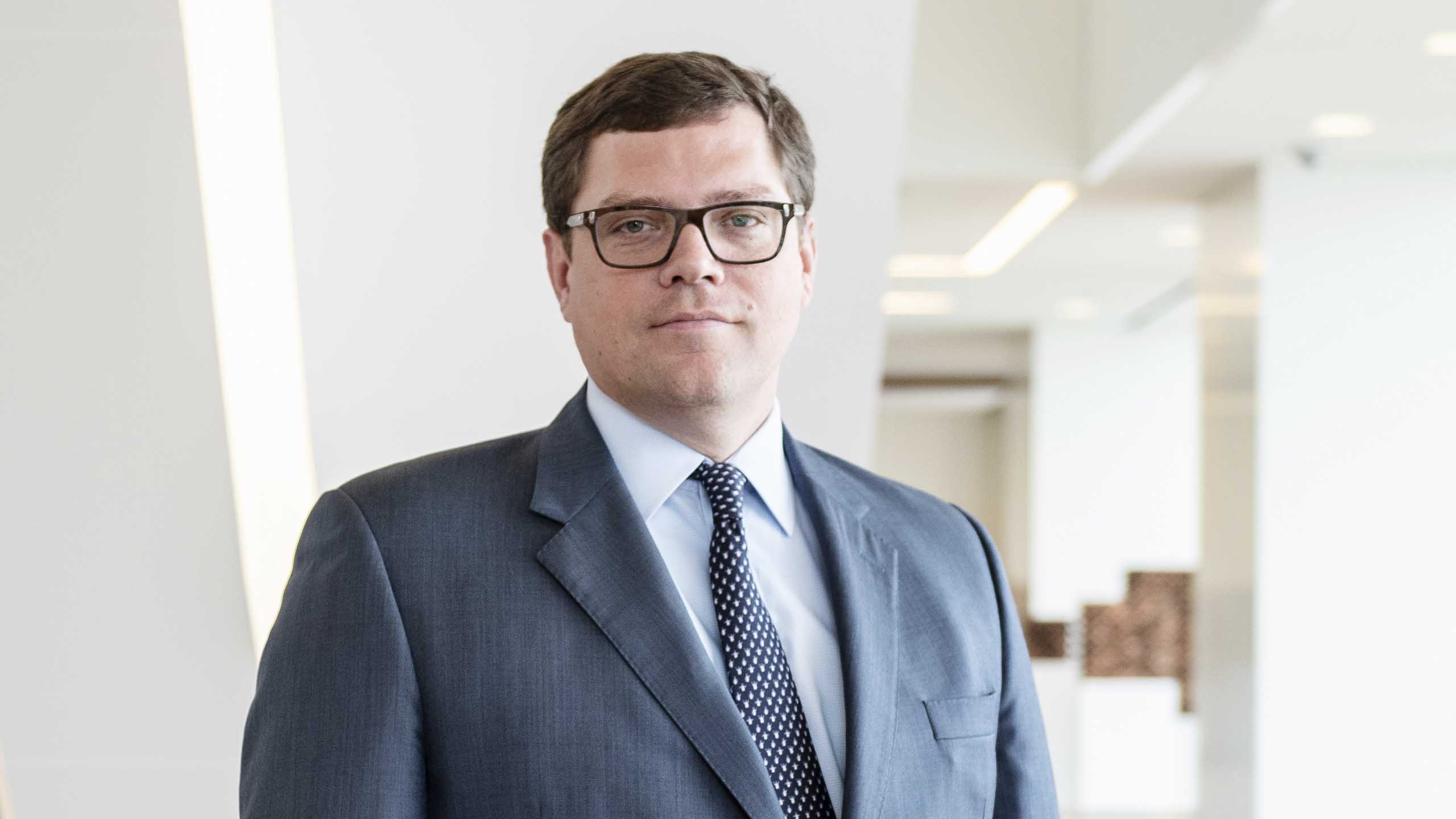


環球經濟繼續從疫情的餘震中復甦,包括貿易錯位、大規模的貨幣及財政干預措施、通脹持續飆升,以及金融市場急劇波動。在2024年的品浩長期展望論壇上,我們探討了這些擾亂因素的餘波如何帶來意想不到的正面發展,同時也造成長期風險。
正面發展方面,在大部份已發展市場經濟體,通脹放緩的速度都快過預期。此外,宏觀經濟和通脹風險現已較一年前我們上次舉行長期展望論壇時更加平衡。各國央行亦準備轉向減息,但落實時間表可能不同。
然而,我們察覺到投資者雖已從下列三大領域獲得好處,卻可能忽略了或會在未來五年長期角度出現的風險:
- 大規模財政刺激帶動美國近期錄得強勁增長,但這與眾不同的例外有其代價:美國的債務處於不可持續之勢,而政府最終需要解決這個問題。與此同時,金融市場可能越來越有需要在缺乏政府支持的預期下運作。
- 人工智能有望重整勞動市場及提升生產力,但可能需要數年時間才會對經濟構成明顯影響。大規模資本投資伴隨股市快速上漲,令人聯想到過往的科網股熱潮。
- 部份市場的資產估值為投資者提供的緩衝並不多,當中包括估值偏高的股票,以及流動性偏低且較易受浮動利率影響的低評級企業直接貸款市場。
對投資者來說,2020年代初的通脹衝擊及政策利率急升已推動債券孳息出現世代級的向上重置,現水平包含了顯著的通脹調整緩衝。初始孳息與五年遠期回報的相關性甚高,隨著通脹回落,這種相關性令固定收益回報的長期前景顯得吸引,特別是相對其他資產的經風險調整回報而言。環球債券市場的投資機會亦異常吸引和多元化,而主動選擇國家及證券是關鍵所在。
在這長期背景下,我們認為應該重新審視(甚至扭轉)傳統的60%股票/40%債券資產配置模式。
隨著銀行業退出某些市場,我們亦看見資產抵押貸款展現吸引的機會,尤其是受惠於美國強勁消費市道的消費者相關領域。我們預期銀行業去中介化及資本需求將為商業房地產債務創造機遇。
我們在長期展望論壇探討了美國和中國正如何帶領全球轉向多極世界秩序,並可能因而改變市場及政策動態。各國在過去數十年享有的和平紅利正逐漸變成衝突開支,未來可能形成一股顛覆力量。
長期主題:風險更平衡,但需警惕黃金時代
我們曾在2023年長期展望《餘震下的經濟》指出,2020年代初出現的擾亂因素可能會形成持久的新現實。我們看見宏觀經濟波幅加劇及增長呆滯的環境。我們也預期全球央行會竭盡所能令通脹回落至「略高於2%」的水平。
現在看來,這些論點大致仍然成立,但我們認為未來五年的展望必須納入及評估2023年5月論壇以來的重大事態發展:
- 中東爆發戰事,而歐洲的俄烏戰爭已進入第三年。
- 大部份已發展市場經濟體的通脹迅速放緩至「略高於2%」,而且暫時未見構成太大傷害。
- 美國與其他已發展市場經濟體的通脹及增長走勢顯著分化。
- 美國失業率接近歷史低位,而財政赤字卻出乎意料增加一倍。
- 市場憂慮美國財政無以為繼的情況將在未來數年惡化,引發去年10月的「國庫券恐慌」。
- 鑑於資金及流動性監管收緊,銀行業持續收緊放貸
我們的長期觀點亦建基於最新的週期展望《市場趨向各異,投資多元分散》。當時我們預期各國央行將分道揚鑣,採取不同的減息路徑,美國會保持相對強勁,而多個大型已發展市場經濟體的增長會放緩。美國金融市場已因此出現「重新增加風險」的主題,投資者亦關注這些趨勢僅屬短期現象抑或會長期持續。
央行保持靈活性…...
環球經濟曾在疫後出現急劇的週期性調整,現已漸漸發展出較持久的長期趨勢,並帶來重要的影響。從長期角度看來,雖然我們仍然預期環球經濟增長停滯及商業週期更趨波動,但這項展望所面對的風險似乎已較一年前更平衡。
當中部份是因為許多先進國家的通脹已迅速回落至「略高於2%」的水平。當局迅速緊縮政策,已令急升的通脹受控,而中期通脹預測並無上升。
另一方面,環球央行有默契地採取「機會型通脹放緩」策略,以引導通脹繼續邁向目標水平,亦是風險更趨平衡的原因。這種策略能夠為政策官員提供空間,可在通脹放緩時減息,從而支持經濟增長。
去年,我們曾關注緊縮貨幣狀況將引發金融不穩,但這情況未有出現。全球銀行業及非銀行業金融市場的系統性風險似乎受到控制。
儘管如此,監管趨勢明顯傾向於收緊對銀行資本和流動性的規定。如果銀行無法在若干市場提供資產負債表容量,許多貸款活動就可能會被推往私人資本市場。
我們認為,隨之而來會有越來越多的機會,讓投資者可以高級貸款人的身份搶佔過去被地區銀行盤踞的領域,例如消費貸款、按揭貸款及設備融資。商業房地產亦可為靈活資本提供機會,因為銀行收緊放貸會加劇房地產價格下跌帶來的挑戰,而未來數年將有超過2萬億美元的貸款到期註1。
...…財政空間卻受到局限
雖然貨幣政策環境有所改善,但財政前景未有好轉。今年的長期展望論壇聚焦於環球財政發展,特別是美國聯邦債務的走勢。
究竟美國經濟展現的週期性強勢能否持久,抑或只是受疫情期間的政府支持措施和債務佔國內生產總值比率上升所帶動,現時仍有待觀察。如果美國最終面臨財政清算,政府可能會透過福利開支改革及加稅來整頓債務。無論從當前政治環境來看這是多麼不可能發生,但即使是不可觸碰的事,亦可能有需要改變的時候。
隨著投資者繼續要求長期債券提供更多補償,先進經濟體的主權債務佔國內生產總值龐大比重的情況(見圖 1),可能會令孳息曲線長期走峭。有證據顯示市場甚至早在央行開始減息前已反映上述調整,例如遠期通脹指數孳息或國庫券期限溢價預測(有關詳情請參閱我們最近的專題文章 《Will the True Treasury Term Premium Please Stand Up?》)。
假如未來商業週期下行,當局勢將在試圖酌情採取財政政策以減緩損害時,面對更多掣肘。我們的基線預測並不認為會出現突發金融危機,但當聚焦於財政問題時,市場將會反覆波動。
儘管面對這些財政壓力,但在缺乏可行挑戰者的情況下,我們認為美元將維持作為全球主要貨幣的地位。雖然美國債務最終或會面臨清算,但鑑於當地在移民、生產力及創新方面擁有優勢,而且美國國庫券是環球儲備資產,加上美國經濟的整體動力,我們認為這個時刻不會立即到來。美國國庫券作為「避險資產」,由於投資者對這類流動性價值儲藏工具的需求增加,暫時仍緩和了債券市場對財政可持續性的憂慮。由此可見,財政改革可能需要極長時間才可落實。
相比其他經濟體,美國可能仍然是「最乾淨的髒襯衣」。中國前景受到房地產業衰退、人口老化及出口市場自由度下跌所拖累。歐洲方面,分化的政治局面將令區內市場難以制訂全面的增長策略,應對地區衝突、能源不安全,以及來自中國高價值製造品的直接競爭。
全球邁向多極局面
地緣政治格局已日益受制於超級大國(美國)與崛起中競爭對手(中國)的緊張關係。中國與俄羅斯都有明確的長期願景,但與西方的理想不一致。過去30年累積的和平紅利正變成衝突開支。
這意味著世界秩序正轉向多極化,各國的合作程度似乎有限,並可能會形成新的中等強國。這種轉變也可能改變市場之間的相關性,令潛在增長和政策回應進一步分化。商業週期亦可能不如以往同步。我們預計這些力量將會導致宏觀經濟及金融市場的波幅高於疫前水平。
金融穩定性風險亦有所升溫,如果上述衝突開始顯著改變跨境資金流或導致資本減值,便可能構成問題。考慮到潛在風險,我們認為中國信貸投資的風險溢價過低,缺乏吸引力。
我們預期中國經濟增長將會繼續放緩,但不致於停滯。值得注意的是,中國正推動再全球化。中國內地的新增長模式聚焦於生產和基建,以抵銷房地產業低迷的影響,這將有助帶動製造業出口增長。這次轉向需要重新評估中國在環球經濟的角色,特別是它對商品市場和通脹的影響力,以及其融入環球金融秩序的程度。
在本週期中,主要新興市場展現了非凡的韌性。經常引發新興市場危機的多項典型因素,例如資本外逃、金融狀況收緊及商品價格急跌,目前都並不明顯,長遠亦似乎不大可能出現。新興市場的債務水平正在上升,但相比已發展市場,至今仍處於可持續的水平。
以國內生產總值比重計算,全球約60%的地區將在今年舉行大型選舉。初步跡象顯示民粹主義政黨已獲得越來越多支持,特別是在歐洲,這意味著環球選舉結果可能帶來經濟和地緣政治政策的優先重點出現變化。我們認為選舉或會加劇分化、多極化及保護主義措施的趨勢,利好友岸外包投資。印度、印尼和墨西哥等國家可望從中受惠。
美國總統大選方面,我們認為貿易、稅務政策、移民、監管及環境政策將最有可能受到影響。不論選舉結果如何,美國的財政赤字都可能繼續處於接近歷史高位。民主、共和兩黨亦會維持對中國的強硬立場。
人工智能成效備受關注
生成式人工智能有潛力改變勞動市場,並將決策任務的參與大眾化,容許更多勞動力作出資訊充分的決定。
不過,許多組織在尋求有效運用人工智能時將面對挑戰。生產力和效率突飛猛進的情況,可能不會出現在未來五年的宏觀數據。這是因為如果要在宏觀層面將人工智能的效益發揮至最大,不但需要對技術本身的應用,更要在微觀層面為個別組織重新設計工作流程和重新審視生產程序。
正如過去數十年採用其他新技術的經驗,若只是輕微改進現有工作模式,對提升生產力的效益就可能不會很明顯。不過,也有一些突破性轉變可能對醫療護理及科學等個別領域的生產力增長造成較大影響。
我們的基線預測認為,新人工智能大型語言模型的全面影響將在長期未來逐漸顯現,而它帶來的顛覆作用則有可能會更快出現。運算、數據中心和綠色能源技術的資本開支膨脹,令更多資源可用於人工智能以外的應用領域,而人工智能投資也令其他範疇更容易取得人工智能支援方面的突破。另一方面,亦有可能發生出乎意料的下行情況,特別是當人工智能模型被濫用作監視、操控或安全威脅,便會導致創新受到規限。
目前,資本開支可能會帶來較短期的刺激作用,但始終需要提升效率方能真正推動長期可持續增長。
對晶片、數據中心及相關供電設備的需求預計將會爆炸性增長,這些趨勢將為有關行業帶來即時影響。
中性政策利率保持低企
現時政策利率升高,是通脹急升的週期性力量所致。當通脹在央行目標附近靠穩時,我們預期先進經濟體的中性貨幣政策利率可能會停留在低於環球金融危機前的水平。
在長期角度而言,我們認為美國中性名義政策利率可能維持在2%至3%的區間(反映長期中性實質利率為0%至1%)。 相比之下,現時的定價反映市場預期中性利率可能不會大幅跌穿4%。這環境能為債券投資者帶來更多機會,因為從正實質利率及期限溢價來看,當前孳息已包含緩衝作用。
我們預計央行的資產負債表規模(現正因為量化緊縮計劃而處於收縮狀態)將繼續明顯大於量化寬鬆時期之前。已發展市場央行可能會繼續推行資產購買計劃,以確保主權債務及回購市場順利運作,並擔當最後貸款人的角色。當中例子包括聯儲局在2023年推出的銀行定期融資計劃,以及英倫銀行在2022年支持英國金邊債券市場的行動。
不過,假如未來要應對經濟衰退,央行採用開放式量寬資產購買計劃的可能性則較低。由於融資成本高於資產回報,維持大型證券投資組合的財務壓力已經漸趨明顯。
現時,當局利用貨幣和財政政策托市的可能性已進一步下降。即使經濟轉弱,政府推出刺激措施支持市場,以助減輕衝擊的能力已經有限。隨著市場更加聚焦於基本因素,並降低對政府出手救市的預期,我們預料市場波幅將會加劇。
投資啟示:固定收益重振旗鼓
我們的2024年長期展望,主張投資者應重新聚焦於公開固定收益市場。相比其他資產類別,我們認為固定收益市場可望帶來具競爭力的回報,且風險較低。當前的孳息水平,加上通脹趨穩的前景,令債券得以再度發揮在投資組合的基本優勢:透過與股票之間的較低相關性,提供吸引收益、抗跌韌性和穩定表現的潛力。
許多精明的資產配置者都已不再局限於傳統的60%股票/40%債券模式。雖然如此,這項經驗法則仍然經常被引用,成為很多投資討論的框架。我們正步入一個需要反思和扭轉這個觀念的時代。
疫後通脹衝擊和央行其後的加息週期,已令債券孳息大幅向上重置。從歷史數據可見,初始孳息多年來都是預示債券回報的高度準確指標(見圖 2)。截至2024年4月30日,兩項常用於反映優質債券表現的基準指數 — 彭博美國綜合債券指數及環球綜合債券指數(美元對沖),孳息分別為5.31%和5.41%。
主動型投資經理能夠以此為基礎,致力為投資者提升收益。透過識別優質債券領域(例如機構按揭抵押證券)的吸引機會,主動型基金經理現時可以建構收益率約為6%至7%的投資組合,而毋需承擔重大的利率、信貸或流動性不足風險。
由此可見,多元化債券配置可帶來媲美股票的長期回報潛力,而且風險調整後特質較為有利,特別是在股市估值可能偏高的情況下(見圖 3)。市場似乎並未反映重大的衰退風險,意味著債券可成為對沖這風險的低成本工具。
現時的債券亦包含具緩衝作用的期限溢價。我們預期隨著政策利率下降及期限溢價上升,孳息曲線將會走峭(詳情請參閱2月份的品浩觀點 《Back to the Future: Term Premium Poised to Rise Again, With Widespread Asset Price Implications》 ),而我們已作出曲線走峭配置的結構性交易。
經歷有史以來最長的倒掛後,美國孳息曲線仍然相對平坦。換言之,投資者不需要承擔大量的利率風險。目前,我們認為5年期孳息曲線具投資價值,並提防長債可能因財政問題而表現遜色。從長期角度來說,如果經濟並無衰退,主動型固定收益配置可望造好;若經濟出現衰退,則固定收益表現甚至會更佳,因孳息下跌可帶動價格上升的潛力。有見及此,我們認為債券較現金吸引。
環球債券市場可提供特別吸引的多元化機會,投資者可能忽略了這些有助加強收益而不需要大幅增加風險的機遇。環球孳息(包括已發展市場及新興市場)已重返具吸引力的水平。美國以外多個經濟體雖然面對更脆弱的環境,但初始財政狀況較佳,兩者均有助支持債券表現。
我們預計商業週期的同步程度將會減弱,不同金融市場的相關性因而下降。各個地區的央行政策及市場情況不同,可以為能夠利用這些差異的主動型環球投資平台提供獨特機會,並透過挑選國家和證券進一步提升回報。旨在促進在岸生產、友岸外包和能源轉型的行業補貼及貿易政策,可能會在行業和國家層面創造贏家和輸家,為主動型投資者帶來更多機遇。
雖然通脹或會反覆波動,但美國國庫抗通脹債券、商品及實質資產具備對沖通脹的特性,實質利率也高於疫情之前。
優先考慮信貸選擇和流動性
雖然整體信貸息差看來大致合理,但從長期角度而言,信貸和行業選擇將更為重要。隨著公開和私人信貸市場發展增長,應能在市況波動時期為擁有靈活資本的主動型投資者提供更多機會。
不少實力和韌力較強的公司都能產生大量現金,而毋需過度依賴融資。與此同時,很多實力較弱的公司卻往往更加需要持續獲得信貸。人工智能技術越是能夠提升生產力,對公司和行業造成的顛覆便越大,從而造就更多贏家和輸家。昔日,新科技出現通常形成榮衰週期,令市況波動的同時亦創造從下而上的主動投資機會。
我們預期當局將加強銀行業監管,繼而導致去中介化的趨勢加劇,推動更多資金流經私人市場。我們繼續聚焦於因為銀行業被迫管理資本及滿足監管要求而造成的流動性缺口。舉例來說,銀行業收緊放貸可能會為商業房地產債券市場的靈活資本創造機會,因為我們預計貸款即將到期的資產持有人將需要大量資金。
資產抵押貸款就是我們眼中別具吸引力,而且擁擠程度較低的投資良機例子。綜觀私人市場,中型市場企業貸款似乎備受青睞,但隨著美國家庭槓桿率下降(見圖4),加上房屋市場持續獲得穩健支持,消費者貸款等領域已展現優秀的長期基本因素及價值。
相比之下,現時集中在企業貸款的資本金額卻值得關注。私人浮息市場快速增長,卻可能並未經歷過以往違約週期的考驗。這些情況增加了科技等領域過度投資的風險,也增加了向高槓桿及低信貸評級公司直接貸款的風險。在我們的長期展望時段,挑戰可能會陸續出現。
鑑於流動性較高的債券市場領域可提供高回報潛力,投資者在犧牲流動性時應設定較高的門檻,例如吸引的潛在回報和嚴格的貸款人契約條款。在當前孳息水平,相對於增持低流動性信貸市場所涉及的取捨而言,加強投資配置於公開固定收益市場(例如優質已發展市場和新興市場債券)的經風險調整回報潛力也較佳。
2024年長期展望論壇嘉賓講者
Tobias Adrian
國際貨幣基金組織金融顧問兼貨幣與資本市場部主任
Anima Anandkumar
加州理工學院Bren計算與數學科學教授
David Autor
麻省理工學院Ford經濟學教授
Jason Furman
哈佛大學甘迺迪政府學院暨經濟系Aetna經濟政策實踐教授
Kevin Hassett
胡佛研究所Brent R. Nicklas傑出經濟研究員、前白宮經濟顧問委員會主席
John H. Cochrane
胡佛研究所Rose-Marie及Jack Anderson高級研究員
Carmen Reinhart
哈佛大學甘迺迪政府學院Minos A. Zombanakis國際金融系統教授
Brad Setser
美國外交關係協會Whitney Shepardson高級研究員
Wendy R. Sherman
前美國副國務卿
品浩全球顧問委員會
享譽全球的經濟和政治議題專家
論壇簡介
品浩是領導全球的主動型固定收益投資專家,在公開和私人市場擁有豐富的經驗和專業知識。品浩的投資程序建基於長期及週期經濟展望論壇。我們來自全球各地的投資專家每年四次共聚一堂,探討環球市場及經濟情況,識別我們認為將帶來重要投資啟示的趨勢。在這些廣泛的討論中,我們會應用行為科學實踐,致力促進意見交流,挑戰各種假設,對抗認知偏見,並建立全面包容的觀點。
在年度長期展望論壇上,我們聚焦於未來五年的經濟前景,據此決定投資組合配置,以期受惠於全球經濟的結構性變化和趨勢。我們相信集思廣益可創造更佳的投資成果,因此論壇會邀請著名嘉賓演講,包括諾貝爾經濟獎得主、決策官員、投資者和歷史學家,為我們的討論帶來不同角度的真知灼見。此外,品浩全球顧問委員會亦積極參與討論,委員會的成員均為享譽全球的經濟和政治議題專家。
週期展望論壇每年舉行三次,集中預測未來六至十二個月的經濟前景,分析各個主要已發展經濟體和新興市場經濟體的商業週期動態,洞悉可影響投資組合配置的貨幣和財政政策、市場風險溢價及相對估值的潛在變化。





